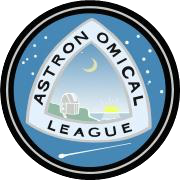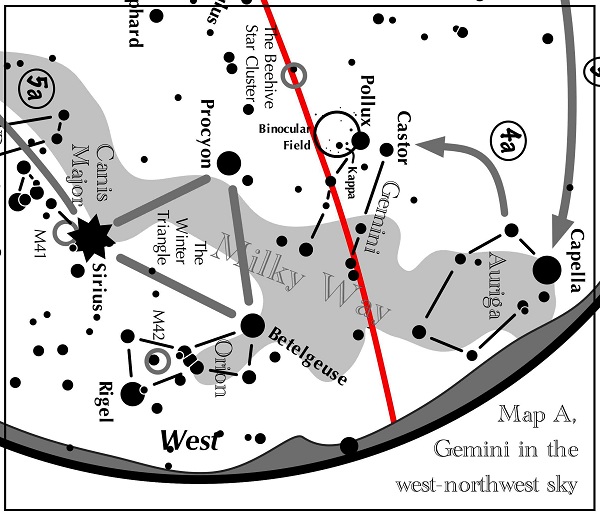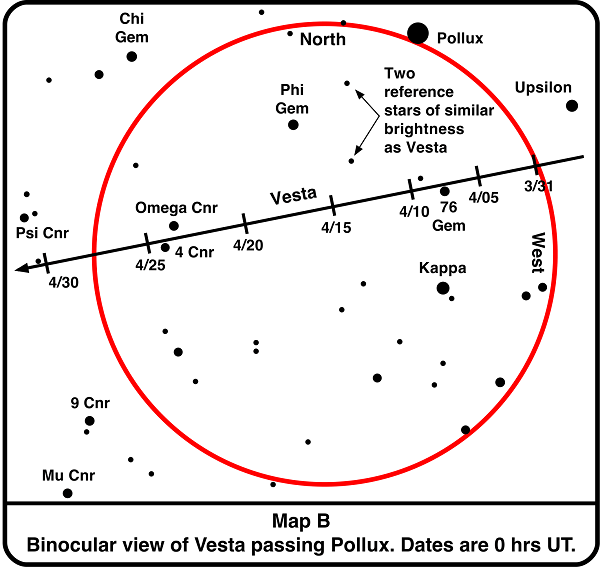April 1 - 30, 2017
Projects for the keen eyed observer toting binoculars and camera
Every GAM, we run a series of Observing Challenges, developed by The Astronomical League. Whether you are a complete novice to astronomy or a seasoned veteran there will be something for you! Some of the challenges can be done in a night and some will take the whole month.
If you are a sidewalk astronomer or part of an astronomy club you might like to run events to help people complete the challenges. If are planning an Observing Challenge event, don't forget to register your event!
Discuss your observations, ask and answer questions and meet fellow astronomers working on these challenges from around the world in our forum.
Share your photos from this challenge with us and the world on Facebook, or Tweet using #GAM2017 hashtag (@gam_awb).
View Venus through binoculars and in the daytime
a naked eye and binocular activity
Our nearest planetary neighbor, Venus, often presents itself as a beacon in either the morning or evening sky. In April 2017, it shines unmistakably in the eastern morning sky forty minutes before sunrise. It now presents its crescent phases as it passed between Earth and the sun on March 25.
Spot Venus low in the east forty minutes before sunrise. This will be easier after April 5. Note its height above the horizon. As the mornings pass, notice that Venus moves away from the sun, i.e., the Earth–Sun–Venus angle becomes larger.
1. After April 5 and thirty to forty minutes before sunrise, locate the brilliant planet low in the bright eastern twilight. Keep following it as it climbs higher in the eastern sky. At sunrise, you should still be able to easily see it. Keep your eyes on it for at least another fifteen minutes while the sky brightens further. To help prevent losing Venus, position yourself so that the planet is placed on the tip of a tree or light pole. Remember, you are viewing Venus in broad daylight!
On April 23, the moon will be next to Venus. Both are crescents. Why?
2. Try observing Venus with a pair of steadily held and sharply focused binoculars after April 5 when it has risen sufficiently above the atmospheric haze before sunrise. A very thin, very small crescent can be discerned. If the glare of the planet is too bright, wear sunglasses. As the mornings pass, Venus moves higher, and its crescent becomes thicker, but smaller. Venus is pulling away from Earth in their race around the sun, making a larger Earth (i.e., you)–sun–Venus angle.
Retrograde Jupiter
a binocular activity
As Earth catches up to mighty Jupiter in their never-ending race around the sun, the bright planet appears to move slightly eastward each night. When Earth begins to overtake it, though, Jupiter reverses direction and heads westward for about four months. Then, after Earth has passed it, it reverses direction again and heads eastward until our planet approaches again the following year.
Show that Jupiter, indeed, moves on the celestial dome:
1. Jupiter rises in the east-southeast as evening darkness settles at the beginning of April. It will easily be the brightest object in that part of the sky (excluding the moon, of course).
2. Use binoculars to view the planet. The bright star to Jupiter’s southeast is Spica, the brightest star in Virgo.
3. Another star will appear in the field, much closer to Jupiter and much dimmer than Spica. This is Theta Virginis. Use it as a reference star to monitor the movement of the bright planet across the field during April.
4. On April 5, Jupiter will lie slightly below Theta, making the star difficult to discern in the planet’s glare. Five nights later, the full moon glows near Jupiter, making viewing of the planet difficult.
5. As the month continues, Jupiter slowly proceeds westward each evening.
6. Refer to the diagram for an illustration and explanation of Jupiter’s motion.
Retrograde Jupiter diagrams. (Click for printable PDF)
Viewing the solar system’s largest moon without optical aid
a naked eye and binocular activity
If the sky is dark and very clear, and if the observer has keen eyesight, the solar system’s largest moon, Jupiter’s Ganymede, can be spotted with the unaided eye.
The brightness of Ganymede is approximately the same as one of the dimmer stars of the Little Dipper. If it weren’t for the overpowering glare from bright Jupiter, Ganymede could be seen in a dark sky by most people. Position yourself so that Jupiter is barely blocked by a dark building, hiding the glaring planet.
On the nights listed, with Jupiter blocked on the west side of the building, Ganymede will be glimpsed twinkling just west of the planet, about the same distance equalling 1/6 of our moon’s apparent diameter:
April 1
April 8 and 9
April 15 and 16
April 22 and 23
April 30
Blocking Jupiter on the east side of the building, Ganymede will be east of the bright planet on these nights:
April 5
April 12 and 13
April 19 and 20
April 26 and 27
In the footsteps of the Celestial Police
a binocular activity
Eighteenth century astronomers felt there was something wrong with our solar system. They suspected that a missing planet existed, moving between the orbits of Mars and Jupiter at 2.8 Astronomical Units from the sun. A curious mathematical relationship, eventually called the Bode–Titus Law, had been formulated which seemed to satisfactorily describe the relative spacing of the planetary orbits. A planet was predicted orbiting 2.8 AU from the sun, but nothing was seen.
Planetary Spacing Table
| Planet | B-T value (AU) | Actual value (AU) |
| Mercury | 0.40 | 0.39 |
| Venus | 0.70 | 0.72 |
| Earth | 1.00 | 1.00 |
| Mars | 1.60 | 1.52 |
| ?? | 2.80 | --- |
| Jupiter | 5.20 | 5.20 |
| Saturn | 10.0 | 9.54 |
| Uranus | 19.6 | 19.19 |
European astronomers felt strongly enough about the reality of this unknown planet that they formed a team, nicknamed the “Celestial Police,” to search for it. However, a new body was spotted shortly before they could begin their organized search. On the night of January 1, 1801, team member Guiseppe Piazzi spied a starlike object that had moved slightly in the heavens between the Hyades and Pleiades star clusters. It was soon realized that it was a small body located near the same distance from the sun as was the “missing” planet predicted by the Bode-Titus law. It was eventually called Ceres.
Three other small bodies were found over the next few years, all lying about the same distance from the sun as Ceres. They were named Pallas, Juno, and Vesta. Over the years, many thousands of these small planetoids were found. They became known as asteroids. Within the past twenty years, Ceres has been reclassified as a “dwarf planet.” The rest, including Vesta, are still referred to as asteroids.
Binocular Program: Tracking the asteroid Vesta in its orbital path
How to find Vesta:
1. Locate the bright star Pollux in Gemini. It will be found in the northwest portion of the sky next to a similarly bright star, Castor. When facing the west-northwestern horizon, Castor lies to the right of Pollux. Refer to map A (below).
2. Aim a pair of binoculars at Pollux. Castor will be seen shining to its right (i.e., towards the northwest).
3. Put Pollux just outside the field of view to the upper right. This will help prevent its glare from interfering with observations.
4. Use the accompanying map B (below) to establish the locations of Kappa and Phi Geminorum, both stars of moderate brightness.
5. Use map B to locate Vesta. It will not appear very bright, but it will resemble the two relatively dim reference stars indicated on the map. One of those stars lies midway between Pollux and Phi Geminorum. The other lies almost midway between Phi and 76 Geminorum.
At the beginning of April, Vesta will appear starlike on the right side of the field of view. Unfortunately, brightening moonlight interferes until April 13. By then, the moon rises long after evening twilight ends, allowing time for suitable observations.
Plot the stars in the field, and, as the nights go by, Vesta will be seen to change locations. (Be aware that this is a rich area in the Milky Way, containing many field stars.) On April 8, it will be very close to the 5th magnitude star 76 Geminorum. Then, on April 13, it will lie nearly midway between the easy-to-see Kappa and Phi Geminorum, and close to one of the two reference stars. By April 24, Vesta will have moved across the field and will lie between 4 and Omega Cancri. On April 29 and 30, moonlight returns to again interfere with observations.











